Overview
Marrakech (alternatively spelt Marrakesh) is one of the most popular destinations in Morocco, a country situated at the North Western most corner of the vast African continent. Popular with travellers searching for the exotic, the heart of Marrakech is in it’s ancient Medina, a walled city once organised around mediaevel craft guilds but now a mix of traditional craft workshops and tanneries, shopping opportunities ranging from tiny stalls in the souk to large and modern shops, mosques, museums, gardens and a huge number of dining and accommodation options. This ancient centre is complimented by more modern suburbs including Geuliz, Hivernage and Palmeraie which offer 20th and 21st century architecture, facilties and shopping. A tourist attraction since the early 20th century Marrakech has a very hip reputation and is well-known too for it’s range of luxury accommodation. Of course, it opens it’s arms to everyone and there are options for everyone from budget backpackers to the seriously wealthy.

Mirrors for sale, featuring my feet!
History
There is evidence of human settlement from before detailed records are available. Berbers were certainly in the region as far back as 1200 BC. In the centuries before Christ the Phoenicians, Carthaginians and Romans came for trade, established mainly coastal settlements. Three main Berber dynasties successively ruled for the first several centuries AD – the Almoravids, the Almohads and the Merenids. The Arabs successfully introduced Islam to the country and eventually the Saadians, who were of Arab descent, took power followed by the Alaouites, also of Arab descent. The 1800s saw the first European incursions and the French formally established colonial rule in 1912. During this time the Glaoua tribe gained dominance but when the French finally granted independence in 1956 it was the Alaouite Sultan who took the reigns and restyled himself as King. Over the next few decades democracy was slowly and somewhat patchily introduced. The current King, who succeeded his father in 1999, took the country in a new direction by throwing his support behind further democractic advances (including improved rights for women and a multiparty political system) and genuine respect for human rights. He also made foreign investment more straightforward and cracked down on aggressive touts and hustlers adding further to Marrakech’s considerable appeal.
It’s difficult to condense the long and varied history of Morocco (and Marrakech) down into the brief overview (above) without losing a great deal of the detail so I’ll be posting a longer historical summary (as a separate blog article) soon.
Main Sights (Medina)
To my mind the Medina itself is the primary tourist attraction of Marrakech, enclosing within it’s old walls a warren of narrow roads and narrower alleyways, exciting souks (see section below), beautiful mosques and secretive riads hiding behind their heavy doors and high walls.
Within the Medina be sure to visit the vast Jemaa El Fna square and the Koutoubia Mosque next to it – the square is one of the main hubs of the Medina and is great for people watching, dining, drinking and entertainment too (in the form of snake charmers, tooth sellers, heavily costumed tea vendors, orange juice sellers and all manner of other vendors. In the evening the square turns into a vast open air street food venue.
The tanneries and nearby traditional crafts workshops offer a fascinating glimpse into a way of life that’s persisted for many, many centuries. Fresh produce markets in this quarter are also geared mainly to natives and were thus of great interest to me after the fabulous, but strongly tourist-oriented central souks.
Other Medina sights to check out include the Musee de Marrakech,the Dar Si Said museum, the Koubba El Badiyin, the Ben Youssef Medersa (koranic school), the Dar Bellarj, the Bab Doukkala Mosque, the Kasbah Mosque and the Saadian Tombs as well as the various palaces within or just outside the city walls such as the Badii Palace, the Melleh and the Bahia Palace. Art lovers should investigate the various galleries and trendy boutiques of the Mouassine quarter.
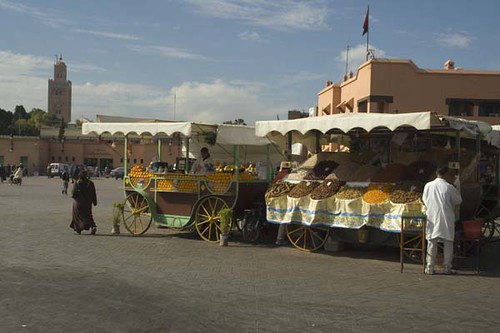
Jemaa El Fna Square with Koutoubia Mosque in background
Main Sights (Beyond the Medina)
Although I had little interest in the more modern suburbs outside the Medina those with more time in Marrakech or more of an interest in Art Deco architecture might enjoy a tour of Gueliz, designed and built by the colonial French in the 1930s. Situated North West of the Medina, broad, tree-lined avenues, parks, attractive modern architecture, easy road access and modern dining, shops and nightlife can all be found here. One sight I would have liked to visit in Gueliz is the Marjorelle Gardens. Designed in the 1930s and now owned privately byYves Saint Laurent I suspect that these gardens were the inspiration for many a trendy garden make-over in the last couple of decades!
Another modern suburb that might interest some is Hivernage which offers more high-end hotels and villas, a large railway station currently being modernised and the Royal Opera House.
To the North East of the Medina is an area known as the Palmerai for the palm groves first planted here centuries ago. Not particularly pretty but known for another selection of high end hotels as well as the homes of local and international rich/ famous.
Those interested in gardens should add (to Marjorelle, above) the Menara Gardens and the royal Agdal Gardens, both of which date back to the Almohad Dynasty of the 12th century as well as the Mamounia Gardens, a great favourite, along with the hotel of the same name, of Winston Churchill. More easily accessible from the Medina are the Koutoubia Gardens (next to the mosque), the Arset Abdelsalam and the Place de Foucault.
For those with more time relaxing retreats to the mountains surrounding the city are also popular and offer a great contrast to the buzz of Marrakech.
The Souks
This labrythine maze of alleyways is a wonderful place to wonder through for visitors interested either in shopping or simply browsing a wide array of colourful and intriguing goods. Each area of the souk, blending seamlessly into the next, traditionally housed craftsmen and vendors of a single type of product (such as leather, ceramics, metalwork, silver jewellery, meat, fruit and vegetables, clothing and shoes) and although some areas remain dominated by that product today others have turned into a free-for-all mix! A good map (such as the one I used in our Time Out Marrakech guide book) really helps narrow in on the areas of personal interest. Although many people seem to report being hassled by aggressive vendors in the souks this was not my experience during our December 2006 visit. It may be that they visited many years ago as I have read that the current King has introduced a number of intiatives to reduce touts, hustling and aggressive sales practices. Certainly, whilst the stall holders often called out to us as we walked past a simple no thanks, delivered with a smile, did not lead to any sour faces let alone the torrents of abuse that some holidaymakers have referred to. The souks are better suited to shoppers who are not only willing to haggle but enjoy it, as I do. My first counter offer was always a maximum of 25% of the vendor’s first price and I very seldom paid more than 50% of that original price.
Handicraft Cooperatives
For those who hate haggling over their shopping there are a couple of co-operatives that might be of interest. The government controlled Ensemble Artisanal on Avenue Mohammed V is a few minutes walk from the Place Jemaa El Fna. Consisting of many small shops arranged around two central courtyards, prices are higher than in the souks but you can watch several of the craftsmen at work and the quality seems pretty good. The Centre Artisinal is more like a large department store specialising in handicrafts and is located in the Medina on Derb Baissa Kasbah.
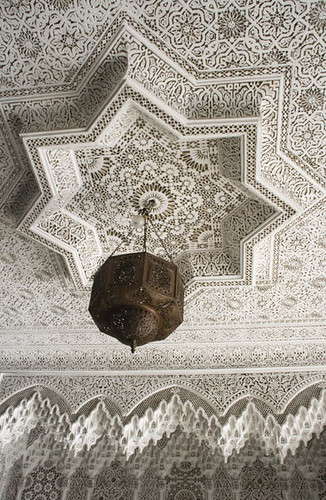
Ornate roof detail at the Ensemble Artisinal
Accommodation
As my guide book so succinctly puts it, for many visitors to Marrakech “the accommodation [is] the destination”. The city has an abundance of boutique hotels, many of which are sympathetic, luxurious and romantic conversions of traditional riads within the Medina. Often referred to as “garden houses”, all the rooms are arranged around a central courtyard garden hidden away from the clamour outside by high walls and large solid doors. Grander riad hotels often involve two or more houses but the majority consist of just 6 or 7 guest rooms of varying sizes, style and luxury. Most also have lots of shared spaces for guests to relax outside of their bedrooms from the snug ground floor dens with lots of cushions and open fireplaces to the open roof terraces with sunbeds, awnings and even bar service.
Visitors should be aware that most riads are not readily accessible by car (though cars can get closer to some than to others) and those with a poor sense of direction may spend many happy hours trying to get back to their chosen base!
Larger luxury hotels are available in the modern suburbs of Marrakech and include the famous Mamounia in Palmerai, a favourite of Winston Churchill’s. Some of these have been converted from former palaces and are very grand indeed.
Also gaining in popularity are out of town retreats for those wishing to escape the buzz of the city for a night or two in the surrounding mountains.
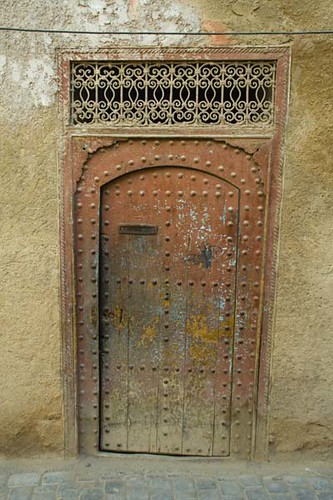
What’s behind those high walls and ornate doors?
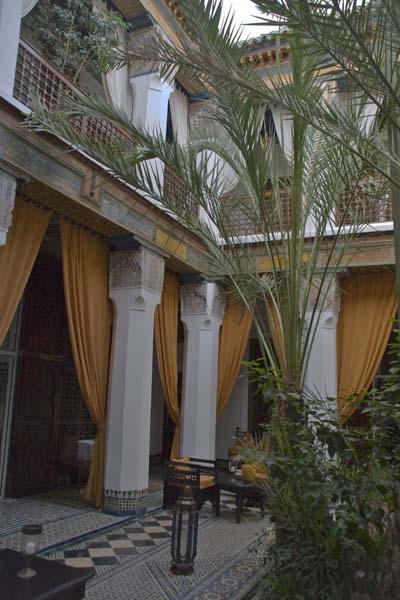
Many riads or garden houses have been turned into boutique hotels
Dining
Whilst I wouldn’t rate Moroccan cuisine as one of the world’s best it certainly has it’s fanbase and eating out in Marrakech is a pleasure indeed. Popular dishes include pigeon pastilla, meat and vegetable tagines and couscous. Marrakech caters for absolutely all budgets and you can fill up on a hearty tagine for as little as 50 dirhams per person or enjoy an absolute feast for as much as 650! Reservations are definitely recommended for the most popular restaurants which get very busy during peak periods.
Traditional Hammams
Many of the luxury hotels have their own hammams but these are often little more than steam rooms. Visitors wanting the full steam, vigorous scrubbing and deft massage should visit one of the many traditional hammams in and around the Medina. (Men and women will be separated).
For more great advice check out:

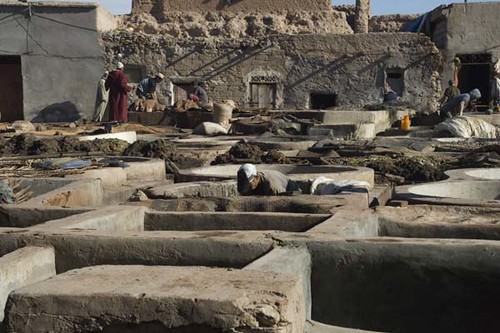
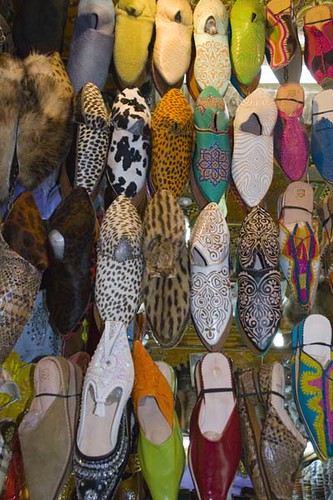

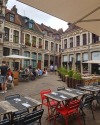
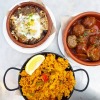
Please leave a comment - I love hearing from you!